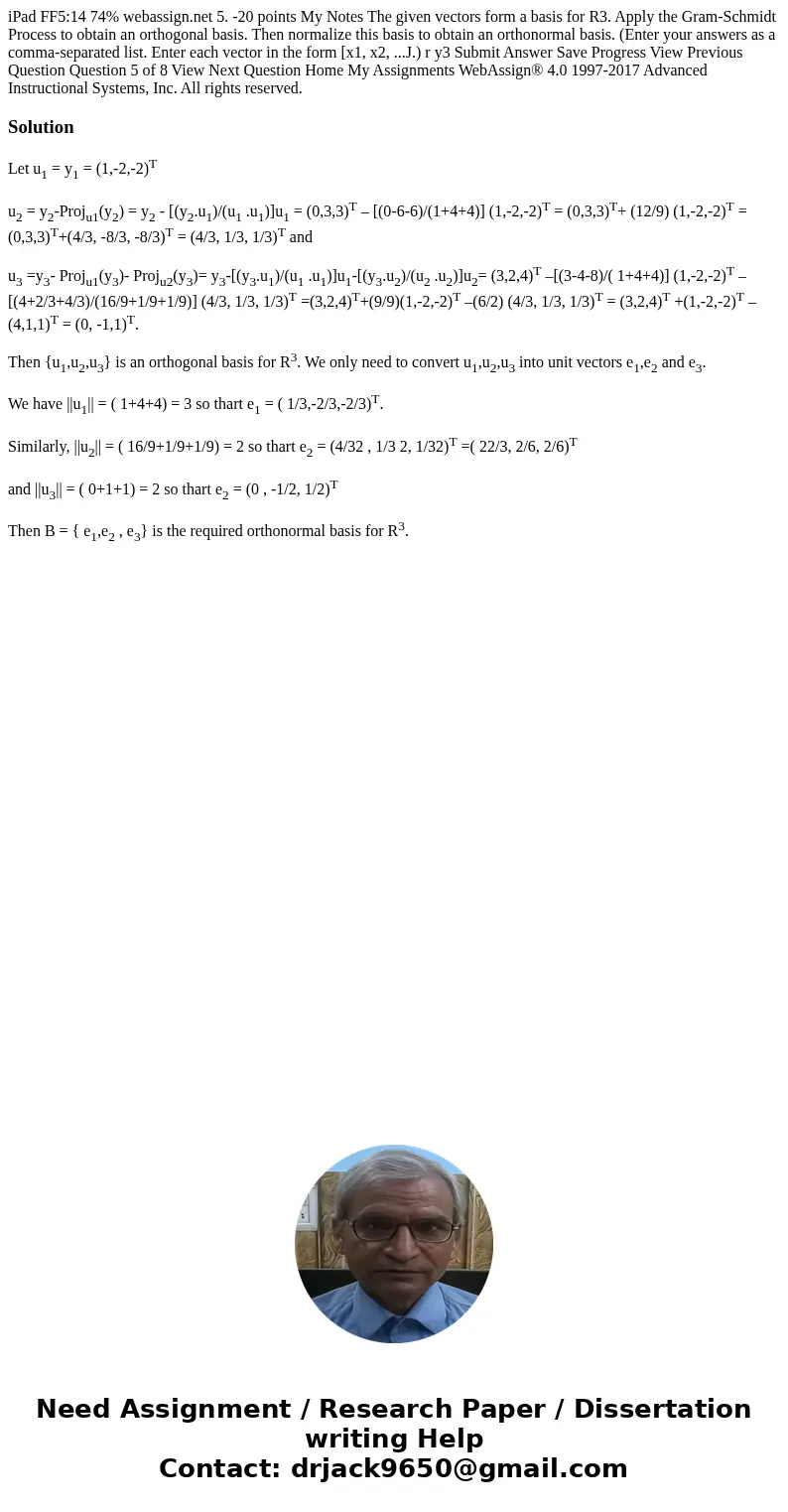iPad FF514 74 webassignnet 5 20 points My Notes The given ve
Solution
Let u1 = y1 = (1,-2,-2)T
u2 = y2-Proju1(y2) = y2 - [(y2.u1)/(u1 .u1)]u1 = (0,3,3)T – [(0-6-6)/(1+4+4)] (1,-2,-2)T = (0,3,3)T+ (12/9) (1,-2,-2)T =(0,3,3)T+(4/3, -8/3, -8/3)T = (4/3, 1/3, 1/3)T and
u3 =y3- Proju1(y3)- Proju2(y3)= y3-[(y3.u1)/(u1 .u1)]u1-[(y3.u2)/(u2 .u2)]u2= (3,2,4)T –[(3-4-8)/( 1+4+4)] (1,-2,-2)T – [(4+2/3+4/3)/(16/9+1/9+1/9)] (4/3, 1/3, 1/3)T =(3,2,4)T+(9/9)(1,-2,-2)T –(6/2) (4/3, 1/3, 1/3)T = (3,2,4)T +(1,-2,-2)T –(4,1,1)T = (0, -1,1)T.
Then {u1,u2,u3} is an orthogonal basis for R3. We only need to convert u1,u2,u3 into unit vectors e1,e2 and e3.
We have ||u1|| = ( 1+4+4) = 3 so thart e1 = ( 1/3,-2/3,-2/3)T.
Similarly, ||u2|| = ( 16/9+1/9+1/9) = 2 so thart e2 = (4/32 , 1/3 2, 1/32)T =( 22/3, 2/6, 2/6)T
and ||u3|| = ( 0+1+1) = 2 so thart e2 = (0 , -1/2, 1/2)T
Then B = { e1,e2 , e3} is the required orthonormal basis for R3.

 Homework Sourse
Homework Sourse